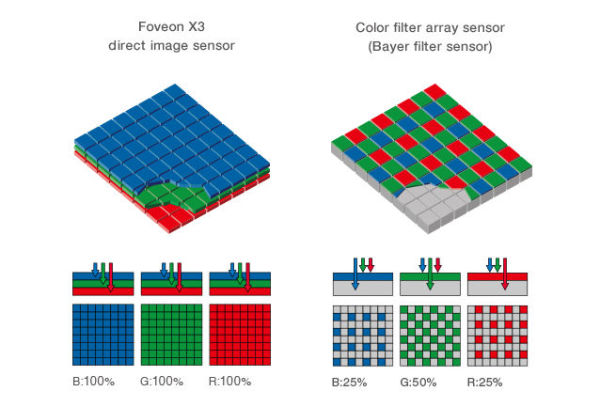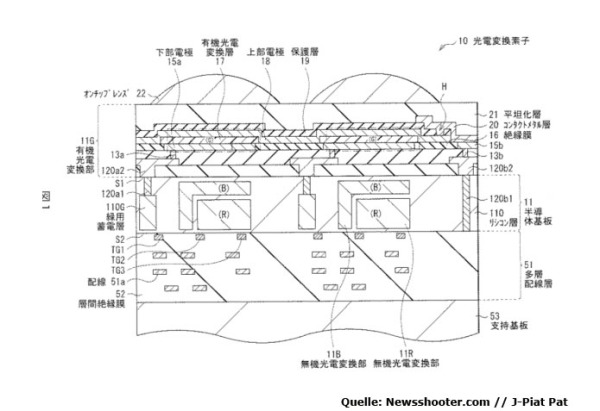According to Newsshooter, Sony has recently filed a patent application for a new type of image sensor -- at least relatively new, since the Sigma Foveon sensor is already based on the same principle. In order to determine the color information for red, green and blue for the incoming light, Foveon -- and now apparently Sony as well -- relies on three layers of sensors lying on top of each other, whose photodiodes only receive one color (wavelength) at a time. For example, an RGB value can be determined for each sensor via the depth, whereas with the classic Bayer sensor, each sensor only provides color information. Several different, adjacent sensors are therefore necessary to obtain an RGB value or to interpolate it in part (debayering). Consequently, considerably more sensors have to be accommodated on the sensor surface, or vice versa: when using vertical color separation technology, more or larger sensors can theoretically be distributed on the same sensor surface.

Unlike the Foveon sensor, however, Sony wants to use organic material instead of silicon, which sounds promising. The order of the color-sensitive layers should also be different; green is at the top and is therefore received first. However, more details about Sony's new sensor technologist are still in short supply -- hopefully video capability will be considered here as well (unlike Sigma' s). As far as we know, the Foveon sensors have not yet been able to elicit any video data. It will also be exciting to see how the noise behaviour will turn out when using a new photosensitive material. If these new multi-layer sensors are even ready for series production, not everything that is patent pending will be produced.


